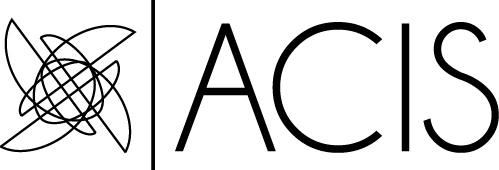
In the wake of the centenary celebration of James Joyce’s Dubliners, two new versions of Dubliners have been produced: New Dubliners by Oona Frawley in 2005, and Dubliners 100 by Thomas Morris in 2014. While both collections include 11-15 new stories about Dublin by contemporary Irish writers, they pay tribute to Joyce in different ways; in Dubliners 100, all the stories bear Joyce’s original titles, while in New Dubliners there is only one story, Joseph O’Connor’s “Two Little Clouds,” that shares the title of Joyce’s original story. Although stories from both collections portray a very much changed Dublin from Joyce’s time, they resonate with Joyce’s use of imagery, epiphany, and stream of consciousness in a singular way. At the 2015 meeting of the American Conference for Irish Studies, the panel, “New Dubliners: A Centenary Celebration of Joyce,” examined both collections and put many new Dubliners stories into conversation with Joyce.
Each of the panelists noted special parallels between these contemporary writers and Joyce. In her presentation, “Looking Through the ‘nicely polished looking glasses’ of Joseph O’Connor and Desmond Hogan in New Dubliners,” Vivian Valvano Lynch (St. John’s U) observed Joycean elision, epiphany, and paralysis in Joseph O’Connor’s “Two Little Clouds.” In this story, much is unsaid and the readers are left with many questions until a taxi-driver’s sarcastic comments on the traffic jams that paralyze “a civilized country” drive home a bitter realization for the narrator, who is a returned Irish emigrant. Lynch also noted Hogan’s distinctive use of stream of consciousness to paint a mental picture of his narrator’s tormented consciousness, fleeting memories, and eventually broken, chaotic narration in the story “Pictures.” Miriam O’Kane Mara (North Dakota State U) elaborated on Belinda McKeon’s rewriting of Joyce’s “Counterparts” in Dubliners 100 in her presentation “How Networks Define Us: #Counterparts.” In this new story, social media such as twitter and electronic texts replaces alcohol and printed documents to cause the downfall of the protagonist, which foregrounds the ways technology shifts literacy in the 21st century. Sandy Manoogian Pearce (Minnesota State U) added a story from New Dubliners, Anthony Glavin’s “Patio Nights,” to her presentation on Dubliners 100 “Catching ‘the ache of it’: Fire Imagery in McCabe and Murphy,” which aligned the two collections in a meaningful way—that is, the fire replaced the snow and became the dominant imagery used in those new Dubliners stories. No matter if it is a Convent fire in Glavin’s “Patio Nights,” a chimney fire in McCabe’s “The Sisters,” or a library fire in Peter Murphy’s “The Dead,” the fire imagery reminds us of the power of intimacy, childhood memory, community, and literature, but at the same time its destructiveness also undercuts such warmth and leaves the readers battling with an ashen pessimism caused by the permanent loss of passion, hope, and history.
Given the fact that six panels out of the whole conference were exclusively devoted to Joyce, Joyce was clearly a focus of the 2015 ACIS meeting. While Joyce’s works were thoroughly discussed in panels like “Metafiction and Identity in Joyce,” “New Approaches to Joyce,” “The Ebbs and Flows of the Black Pool: Reconfiguring Modern Dublin,” “Revisiting the Wake: Joyce’s Play with American Politics and Literature,” and “Joyce’s Sources: The Soul, Politics, and Completion,” it was also worth studying contemporary Irish writers whose works were inspired by Joyce such as those represented in the New Dubliners panel.
